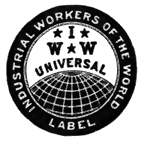Flexible Manufacturing Networks and the Cooperative Economy
A couple of items from Jesse Walker, in the comments to "Markets Without Capitalists." The first, "Bologna and Emilia Romagna – A Model of Economic Democracy," was written by Robert Williams, president of the 300,000-member Vancouver City Savings Credit Union. As he recounts,
The other is by Walker himself: "Outsource Locally: Manufacturing networks"
we had determined we should play a greater role in generating employment in the Vancouver region. I was entrusted to Chair a small task force and business planning team to determine the best approach. Our mentors in this work were the Shorebank Group from Chicagos’ South Side, highly regarded development bankers. The Chicagoans and others advised us that if we wanted to find a region that had advanced its economic base and might well be the great economic democracy in the West, we would find it in Emilia Romgna.
We kept all this in mind, while completing our plans for what ended up as the VanCity Capital Corporation a subsidiary of the Credit Union. Our new company is a business lender in the new economy that lends against cash flow on a subordinated debt basis. We also decided as part of our business plan we should lend in the social and cooperative sector on the same basis.
The other is by Walker himself: "Outsource Locally: Manufacturing networks"
The Manufacturing Alliance of the Red River Valley is a flexible manufacturing network: a collection of small firms that both cooperate and compete, working together on projects that no single member could complete alone. The alliance seeks out contracts from Boeing, Caterpillar, and other companies, then distributes the work to its members, whose close proximity—they’re all in the Rockford, Illinois, area—allows them to easily collaborate.
In effect, this stands outsourcing’s image on its head, sending work to local enterprises rather than abroad. That’s an attractive idea for the Rockford region, which has lost almost 14,000 manufacturing jobs in the last decade.
The organization is only two years old, and it’s hard to predict how well it will succeed. But such networks have already proven profitable elsewhere: They dominate the economy of Emilia-Romagna, in northern Italy, and have a foothold in several other parts of the world, most notably Denmark.
In Emilia-Romagna, around 90,000 manufacturing enterprises, frequently family- or employee-owned, will collaborate as needed, forming ad hoc alliances for particular tasks. One result is that the region’s dominant form of economic organization is a network, not a hierarchy, with workplaces that look more like an artisan’s shop than an assembly line. Another is a vast increase in local wealth.









3 Comments:
I wonder if this is the same Robert Williams who was in the BC NDP government back in the 1970's? He was known to be one of the most left-wing ministers in that government and also, interestingly enough, influenced by Henry George. The NDP's system of green reserves (land protected from development) was, I remember reading at the time, taken from Georgist thought.
He's on the Vancouver planning commission now, according to a Google. If he's trying to promote in-fill development and fight sprawl, a land-value tax makes a lot more sense than a regulatory approach.
Was Williams the forests minister? My brother (NDP member and a bigger political history wonk than myself) tells me that the Dave Barrett government in the 1970s put a leftist-Georgist in charge of the forests sector, which is why the system here is set up on sort-of Georgist lines.
On the land reserve system (Agricultural Land Reserve, or ALR) I wrote a column for my employing paper recently in which I essentially suggested usufruct ownership of agricultural land. I wish I could rewrite it a bit now, but I did get called a communist by a letter writer. That was fun!
Post a Comment
<< Home